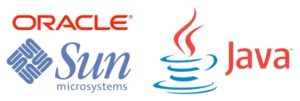The Java Programming Language
 The beta version of Java is presented in 1995 by Sun Microsystems, proposing itself as an object-oriented language designed with the least number of dependencies possible, allowing developers to program without worrying about the operating system on which the application would run. The source program is usually compiled into a bytecode, which can later be run on any Java virtual machine. Today, Java applications can run on any platform, from tablets, laptops, game consoles, or supercomputers.
The beta version of Java is presented in 1995 by Sun Microsystems, proposing itself as an object-oriented language designed with the least number of dependencies possible, allowing developers to program without worrying about the operating system on which the application would run. The source program is usually compiled into a bytecode, which can later be run on any Java virtual machine. Today, Java applications can run on any platform, from tablets, laptops, game consoles, or supercomputers.
Java begins as a project by James Gosling, Mike Sheridan, and Patrick Naughton for interactive television and with a syntax similar to that of C or C ++ so that developers will find it familiar.
After its sale to Oracle in 2010, Sun‘s implementation is taken as the basis for versions of Windows, macOS, Linux, and Solaris. Due to the lack of a Java standard (Sun‘s attempts in 1997 are soon abandoned), Oracle‘s implementation is considered de facto standard.
The ability to run Java code on multiple platforms made it well received by the Internet industry, which introduced, despite not being an open standard, Applet technology. Despite the fact that this technology did not have the life that was expected, it marked a before and after since it allowed to deliver an application to a client without it being installed on their computer, which opened a new stage in the development of business in Internet.
The goal of Java is still to get compatible implementations. Since its inception, Java has been a very popular language among developers. Today (2021), it occupies the 3rd position in the TIOBE ranking of popularity of programming languages (2nd in 2020).
Java
Born: 1995
Versions: Java 2 (v1.2, 1998);
Influences of: Pascal; C++; Smalltalk 80;
Influences: C#; Objective C; JavaScript; PHP; Python;

